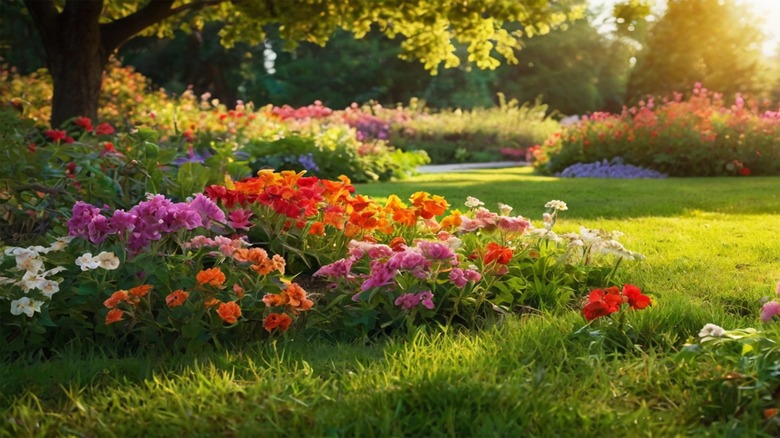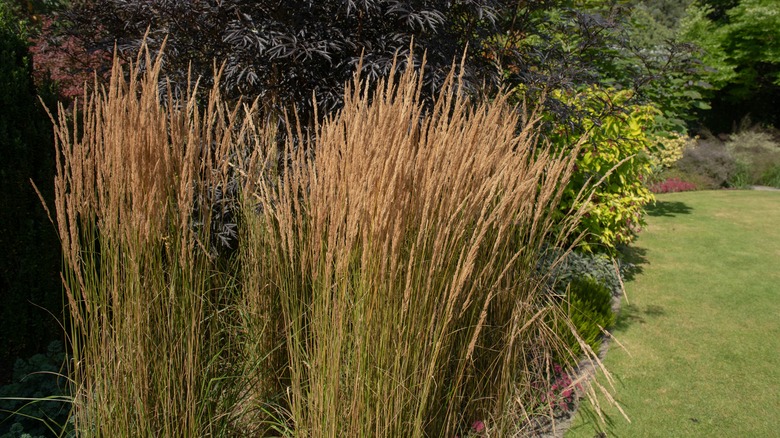How To Build A Gorgeous Windbreak With Grasses That's Functional For Your Garden
As the name implies, windbreaks are used to slow the wind and protect your plants and soil from the damaging effects of strong gusts. But they can also function as a privacy screen or as a backdrop for your ornamental plants. Depending on the species you choose and how you plant them, they can even help reduce outside noise, keep pathways clear of snow drift, and lower your heating costs in winter. If you don't have the time or space to establish a tree or shrub windbreak, ornamental grasses can be a faster, but still functional alternative. Specifically, use tall, stiff perennial grasses that are sturdy enough to withstand the winds rather than getting blown over by them. These species can provide a year-round windbreak that also serves as important habitat for wildlife and pollinators.
The key is to choose the right species for your site and plant them in a way that provides effective wind protection for the garden. If you're hoping to bring more pollinators into your yard and garden, choose native species and consider adding some wildflowers to the mix. This way, your windbreak can offer both food and shelter for local pollinators. It's also important to use more than one species and inter-plant them to create a biodiverse windbreak. If a disease that affects one species breaks out, the diversity will prevent it from decimating every plant in your windbreak in one fell swoop. Finally, make sure to get the spacing and orientation right to provide maximum wind protection for your garden.
Building a functional windbreak with grasses
The first and most important step to building a grass windbreak is species selection. Choose species that are well-adapted to the soil, light levels, and the local climate. One native ornamental grass you should consider for your yard is big sacaton (Sporobolus wrightii). The bunchgrass can grow up to 10 feet tall with rigid, upright leaves that tolerate almost any soil conditions and requires little to no watering once established.
Another popular choice is big bluestem (Andropogon gerardii). It can reach up to 8 feet, tolerates most soil conditions, and maintains its shape through most of the winter so it will look attractive and provide wind protection year round. Other tall grass species to consider include switchgrass (Panicum virgatum), Indian grass (Sorghastrum nutans), northern sea oats (Chasmanthium latifolium), and feather reed grass (Calamogrostis x acutiflora). Meanwhile, it's best to avoid grasses that don't reach significant heights. For example, while tufted hair grass (Deschampsia cespitosa) is a great ornamental grass that will make your yard a bird and pollinator paradise, it's not an effective winbreak species due to its maximum height of just 3 feet.
Once you've chosen the grass species, find the prevailing wind direction in your region on this wind map from the Climate Literacy and Energy Awareness Network. Your row of grasses should be perpendicular to the typical wind direction. If space allows, you can plant grasses in an L or U shape to provide protection from multiple directions. Finally, plant plugs at the minimum recommended spacing listed on the packaging so that they will grow closely together to form a solid barrier.

